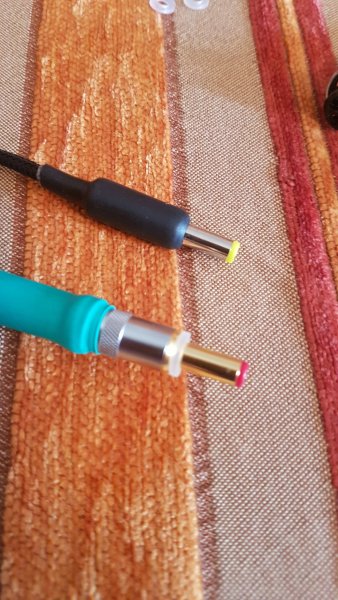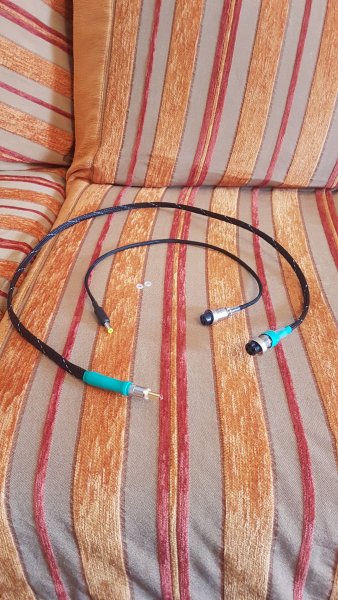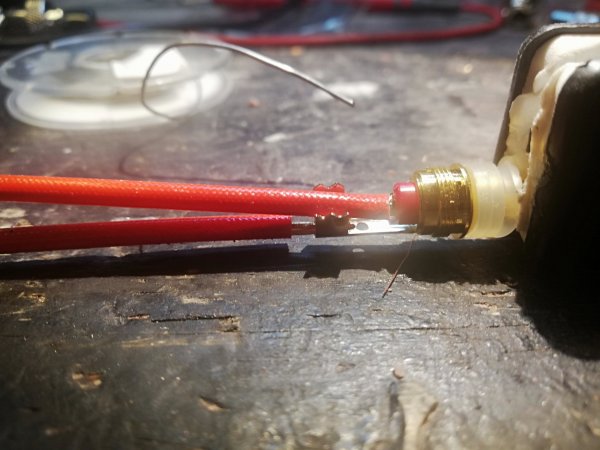2020--Feb
AM: Hi QD, how's the Farad 3 coming along? I am now thinking if I should get the Farad 3 or the Plixir Elite. Any advise? The Plixir with 2 outlets at 2amps is going for $830 Singapore Dollars and the Farad 3 with the full upgrade is $930 but with a single output. Thank you.
Me: Hello AM! The Farad 3 is doing just fine. After installation, burn-in, and connecting (via Ghent JSSG 360 DC power cable) to my SOtM USBultra, it's been performing flawlessly. The past couple of months have been rather crazy, so I've been rather distracted from my usual work/rest routine. Thus, I haven't done the comparison between the Plixir Elite and the Farad yet. Getting it done will require some deft yoga moves, as the space behind my audio rack is rather crowded, and I will also need to disconnect my second SOtM sNH-10G, to free up one DC output from the stacked Plixir Elite. The USBultra will be fed by either the Farad DC, or the Plixir Elite BDC, for an A/B test. My guess is that both are already performing at the highest possible level - if I were to take a guess, the Plixir will score a subjective 88-92 points, with the Farad scoring 92-94 points, so on an absolute basis, the difference will be rather subtle. But thanks for keeping me on my toes, as I'm really curious myself which is the audibly "better" one. My advice is to skip the Plixir Elite with the two outlets, and go straight to either the stacked version with independent transformers, or the standalone Farad. Inter-component noise is not something worth gambling with, as having two DC outputs connected in parallel is pretty much the same as having one DC cable in a Y-configuration. Any noise generated by one of the two connected components will leak into the other one, defeating the goal of isolation. I happen to really enjoy the benefit of the stacked Plixir Elites, as only one AC cable is necessary to power both units. Audiophile AC cables can get pretty pricey, as we both know. And a single 2A BDC will likely be totally inadequate to power two components... wait, which two components are you trying to power with the single Plixir Elite DC unit?
AM: Hi QD, I was thinking of powering my 2 switches or the txusb and sms-200. I thought of getting a 4amp unit
AM: Hi QD, how's the Farad 3 coming along? I am now thinking if I should get the Farad 3 or the Plixir Elite. Any advise? The Plixir with 2 outlets at 2amps is going for $830 Singapore Dollars and the Farad 3 with the full upgrade is $930 but with a single output. Thank you.
Me: Hello AM! The Farad 3 is doing just fine. After installation, burn-in, and connecting (via Ghent JSSG 360 DC power cable) to my SOtM USBultra, it's been performing flawlessly. The past couple of months have been rather crazy, so I've been rather distracted from my usual work/rest routine. Thus, I haven't done the comparison between the Plixir Elite and the Farad yet. Getting it done will require some deft yoga moves, as the space behind my audio rack is rather crowded, and I will also need to disconnect my second SOtM sNH-10G, to free up one DC output from the stacked Plixir Elite. The USBultra will be fed by either the Farad DC, or the Plixir Elite BDC, for an A/B test. My guess is that both are already performing at the highest possible level - if I were to take a guess, the Plixir will score a subjective 88-92 points, with the Farad scoring 92-94 points, so on an absolute basis, the difference will be rather subtle. But thanks for keeping me on my toes, as I'm really curious myself which is the audibly "better" one. My advice is to skip the Plixir Elite with the two outlets, and go straight to either the stacked version with independent transformers, or the standalone Farad. Inter-component noise is not something worth gambling with, as having two DC outputs connected in parallel is pretty much the same as having one DC cable in a Y-configuration. Any noise generated by one of the two connected components will leak into the other one, defeating the goal of isolation. I happen to really enjoy the benefit of the stacked Plixir Elites, as only one AC cable is necessary to power both units. Audiophile AC cables can get pretty pricey, as we both know. And a single 2A BDC will likely be totally inadequate to power two components... wait, which two components are you trying to power with the single Plixir Elite DC unit?
AM: Hi QD, I was thinking of powering my 2 switches or the txusb and sms-200. I thought of getting a 4amp unit
Last edited:














